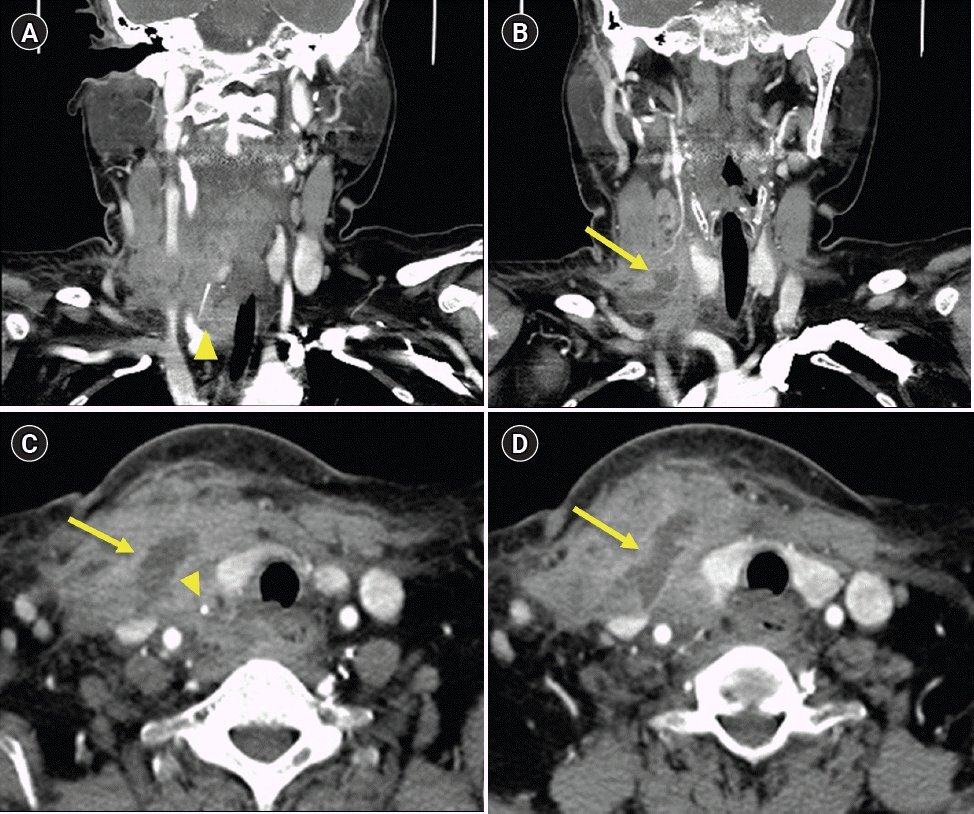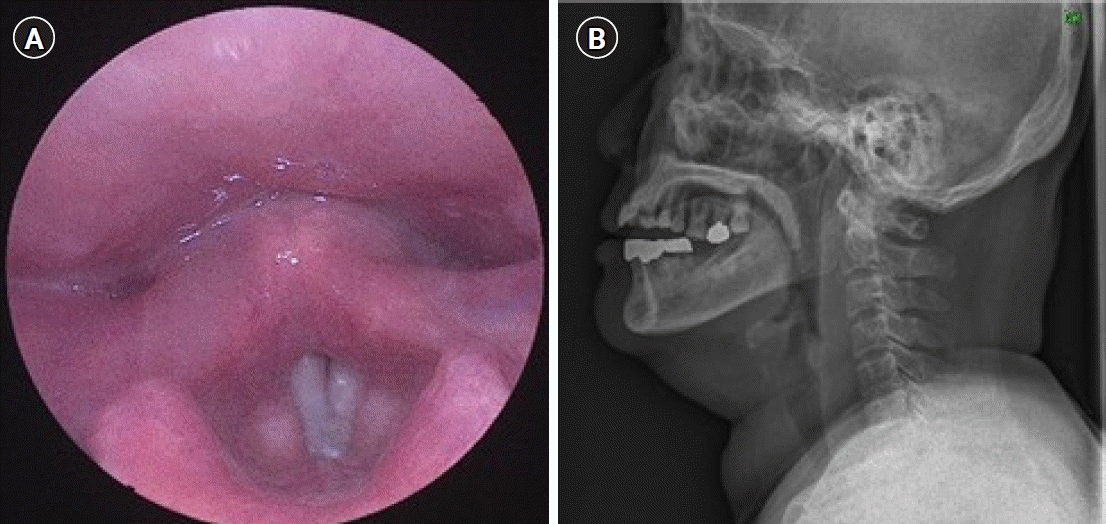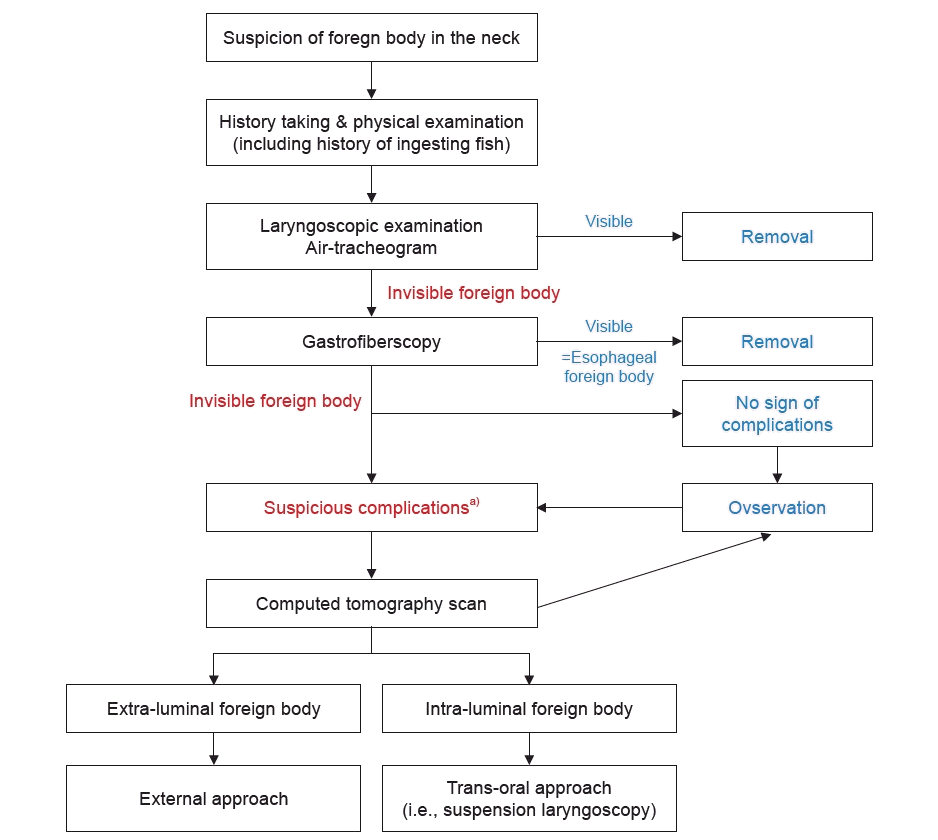1. Shim WY, Jeong WH, Park JB, Kim CA, Baik SK. Two cases of fish bone foreign body presenting as tongue and neck mass. Korean J Otolaryngol. 2001; 44:556–9.
2. Chee LW, Sethi DS. Diagnostic and therapeutic approach to migrating foreign bodies. Ann Otol Rhinol Laryngol. 1999; 108:177–80.
3. Ma DH, Lee YS, Lee MJ, Yim JS, Kim BC. A clinical study of foreign bodies in the food and air passages: in 649 cases for 8 years. Korean J Otolaryngol. 1989; 32:923–8.
4. Kim JP, Kwon OJ, Shim HS, Kim RB, Kim JH, Woo SH. Analysis of clinical feature and management of fish bone ingestion of upper gastrointestinal tract. Clin Exp Otorhinolaryngol. 2015; 8:261–7.
5. Chung SM, Kim HS, Park EH. Migrating pharyngeal foreign bodies: a series of four cases of saw-toothed fish bones. Eur Arch Otorhinolaryngol. 2008; 265:1125–9.
6. Hong JC, Lee HS, Kim JY, Lee KD. A case of fish bone foreign body presenting as tongue base abscess. J Clin Otolaryngol Head Neck Surg. 2006; 17:270–2.
7. Bendet E, Horowitz Z, Heyman Z, Faibel M, Kronenberg J. Migration of fishbone following penetration of the cervical esophagus presenting as a thyroid mass. Auris Nasus Larynx. 1992; 19:193–7.
8. Feldhusen F, Braunbeck T, Wallner F. Dysphagia after eating sea foods: pyriform sinus foreign body with perforation and abscess of the parapharyngeal space. HNO. 1999; 47:746–7.
9. Kim HU. Oroesophageal fish bone foreign body. Clin Endosc. 2016; 49:318–26.
10. Park JH, Park CH, Park JH, Lee SJ, Lee WS, Joo YE, et al. Review of 209 cases of foreign bodies in the upper gastrointestinal tract and clinical factors for successful endoscopic removal. Korean J Gastroenterol. 2004; 43:226–33.






 PDF
PDF Citation
Citation Print
Print





 XML Download
XML Download